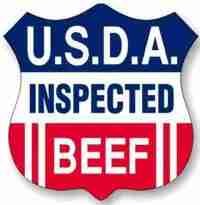Introduction to Grass-Fed Beef
Grass-fed beef has increasingly gained recognition as a nutritious alternative to conventional beef, primarily attributable to the animals’ diet consisting exclusively of grass and forage, as opposed to grain-based feeds often utilized in industrial farming. This dietary distinction leads to several notable benefits that enhance both the nutritional profile of the meat and its environmental impact. Grass-fed beef is typically lower in total fat and contains a higher ratio of omega-3 fatty acids, which are beneficial for cardiovascular health. Additionally, it boasts an increased level of antioxidants, such as vitamin E and beta-carotene, compared to its grain-fed counterparts. These attributes make grass-fed beef a healthier choice for consumers seeking to make informed dietary selections.
From an environmental perspective, grass-fed beef production can contribute positively to sustainable farming practices. Cattle raised on pasture can help improve soil health through natural fertilization, enhance biodiversity, and reduce the need for chemical fertilizers and pesticides. Furthermore, well-managed grazing systems can aid in carbon sequestration, an important factor in mitigating climate change. By choosing grass-fed beef, consumers support farming methods that have the potential to be more ecologically responsible.
The increased awareness surrounding the benefits of grass-fed beef is prompting consumers to rethink their choices, especially during entertaining occasions such as spring BBQs. With its superior flavor—often described as rich and robust—grass-fed beef not only meets the taste expectations of BBQ enthusiasts but also aligns with the growing trend towards healthier and more sustainable eating practices. Hosting a gathering featuring grass-fed beef can elevate the culinary experience while promoting a commitment to health and environmental stewardship.
Choosing the Right Cuts of Grass-Fed Beef
When planning a grass-fed beef BBQ, selecting the right cuts of meat is crucial for ensuring a delicious and satisfying meal. Grass-fed beef is known for its rich flavor and nutritional benefits, but it also requires careful consideration of the cuts that are best suited for grilling. Popular cuts include ribeye, sirloin, flank steak, and ground beef for burgers. Each of these cuts offers unique qualities and can enhance your BBQ experience.
Ribeye steaks are often considered the premier choice for grilling due to their marbling, which contributes to tenderness and juiciness. The balance of fat and meat creates a rich flavor profile that is beloved by BBQ enthusiasts. Sirloin, on the other hand, is a leaner option that provides great flavor while being more affordable. For those looking to serve something a bit different, flank steak is a fantastic option; it is best marinated and grilled quickly at high heat to achieve tenderness.
Ground beef, particularly from grass-fed sources, is an excellent choice for burgers. Opt for a blend that incorporates a higher fat content to ensure juicy and flavorful patties. Look for ground beef with a fat-to-lean ratio of around 80/20. Regardless of the cut, selecting high-quality meat is essential. When examining your options, focus on marbling, as well-marbled cuts tend to have better flavor and tenderness. Additionally, pay attention to the color; fresh grass-fed beef should have a bright red hue, indicating quality. It is also advisable to check for any signs of discoloration or an off-putting odor, as these can be indicators of spoilage.
In conclusion, choosing the right cuts of grass-fed beef not only enhances the flavor of your BBQ but also ensures a memorable dining experience for your guests. By understanding the characteristics of each cut and selecting high-quality meat, you can create a delicious meal that showcases the benefits of grass-fed beef.
Marinades and Seasonings for Optimal Flavor
Marinating grass-fed beef is a crucial step in elevating its flavor and ensuring a tender, juicy outcome. Unlike grain-fed beef, grass-fed varieties possess a distinct taste due to their diet, which may require different approaches to seasoning. The right marinade can enhance the natural flavor profiles of the meat while infusing moisture, making it a vital component to consider when preparing for a barbecue.
To create an effective marinade, one should focus on balancing acidity, fat, and seasoning. Acids such as vinegar, citrus juices, or yogurt help to break down proteins, creating a more tender texture. For example, a simple marinade consisting of olive oil, balsamic vinegar, minced garlic, and fresh herbs like rosemary or thyme can impart a robust flavor, making it an excellent choice for marinating steaks or roasts. Aim to let the meat soak in the marinade for at least two hours, though overnight is often preferable for deeper flavor absorption.
In addition to traditional marinades, dry rubs can also be an excellent option for seasoning grass-fed beef. A blend of coarse kosher salt, black pepper, smoked paprika, and a touch of brown sugar can create a delightful crust when grilled. This combination not only enhances the natural flavor but also allows for a pleasing texture. Experimenting with other spices, such as cumin, coriander, or chili powder, can yield exciting variations that appeal to different palates.
Ultimately, the key is to respect the unique qualities of grass-fed beef while enhancing its juiciness and tenderness. Applying a combination of marinades and seasonings leads to a flavorful and satisfying barbecue experience. Incorporating flavor-enhancing techniques will ensure that your guests enjoy a delicious meal that showcases the high-quality grass-fed beef you are proud to serve.
Setting Up the BBQ Area for Success
Creating a welcoming and functional BBQ area is essential for hosting a successful spring gathering centered around your grass-fed beef offerings. Start by choosing an appropriate location that is both accessible and safe for cooking and dining. Ideally, select a flat, unobstructed space where guests can enjoy outdoor views while remaining comfortably distanced from any potential hazards, such as trees or bushes that may catch fire.
Equipment essentials play a critical role in ensuring your BBQ runs smoothly. A reliable grill is the centerpiece of your setup. When deciding between charcoal and gas grills, consider the unique flavors each offers. Charcoal grills are known for imparting a smoky taste, enhancing the savory profile of grass-fed beef, while gas grills offer convenience and consistent heat control. Whichever option you choose, ensure it is well-maintained and capable of accommodating the quantity of meat you plan to serve.
In addition to the grill, set up necessary tools nearby, including tongs, a meat thermometer, and utensils for serving. To enhance guests’ experience, provide comfortable seating and easy access to food and drinks. Arranging tables and chairs in a circular or half-circular formation encourages conversation and social interaction, essential for a lively atmosphere. If space allows, create smaller, intimate seating areas away from the main cooking zone, where guests can relax and engage with one another without feeling crowding.
Lighting is also crucial—consider using string lights or portable lanterns to create a warm ambiance during evening events. Ensure that pathways between seating and serving areas are clear to allow for easy movement. With careful attention to your BBQ area’s layout, equipment, and lighting, you can facilitate a successful, enjoyable spring gathering that highlights your delicious grass-fed beef.
Cooking Techniques for Grass-Fed Beef
When it comes to preparing grass-fed beef, selecting the appropriate cooking techniques is essential to ensure optimal flavor and tenderness. One of the most popular methods is direct grilling, where the beef is cooked over high heat. This technique is particularly effective for steaks and burgers, as it creates a delicious sear that locks in flavors. It is recommended to cook grass-fed beef at a slightly lower temperature than conventional beef, ideally around 130 to 140 degrees Fahrenheit for medium-rare. This can help prevent the meat from becoming dry, which is a common issue due to its lower fat content.
Indirect grilling is another excellent option for larger cuts, such as roasts or briskets. This method involves cooking the meat away from direct heat, allowing it to cook slowly and evenly. Using a smoker or setting up a two-zone fire on your grill can enhance the flavor of the grass-fed beef while maintaining its moisture. It’s advisable to use a meat thermometer to monitor the internal temperature, aiming for about 125 degrees Fahrenheit for medium-rare, and allowing it to rest for several minutes before slicing.
For those looking to achieve tender and juicy grass-fed beef, sous vide is an innovative cooking method worth considering. Sous vide cooking involves sealing the beef in a vacuum-sealed bag and heating it in a water bath at a precise temperature. This technique allows the beef to cook evenly, retaining its juices and enhancing flavor. Recommended temperatures for cooking grass-fed beef sous vide include 130 degrees Fahrenheit for medium-rare, typically cooked for several hours to maximize tenderness. Regardless of the cooking method chosen, keeping an eye on the time and temperature is crucial to avoid drying out this premium cut of meat.
Side Dishes That Pair Perfectly
When hosting a grass-fed beef BBQ, the right side dishes can elevate your meal and enhance the natural flavors of the beef. With spring in the air, it is beneficial to incorporate seasonal ingredients that not only complement the main dish but also bring freshness to your spread. Consider starting with a vibrant mixed greens salad tossed with a tangy vinaigrette. Using baby greens, radishes, and asparagus will add a delightful crunch and refreshing taste. You may also include seasonal fruits, such as strawberries or citrus, to create a harmonious balance of flavors.
Grilled vegetables are another excellent choice for pairing with grass-fed beef. This spring, consider using a medley of zucchini, bell peppers, and red onions. Lightly marinate the vegetables with olive oil, herbs, and a squeeze of lemon before grilling them to achieve smoky, caramelized flavor. These seasonal vegetables not only enhance the visual appeal of your BBQ but also add essential nutrients to the meal.
No BBQ would be complete without appropriate sauces and dips. Prepare a classic chimichurri sauce, made with fresh herbs like parsley and cilantro, garlic, vinegar, and olive oil. This sauce not only adds a burst of flavor but also complements the richness of grass-fed beef wonderfully. Alternatively, consider a roasted garlic aioli, which can serve as a spread for vegetables and a dressing for salads, adding creaminess to the overall feast.
By thoughtfully selecting side dishes that utilize seasonal ingredients, you can create a balanced BBQ menu that enhances the experience of enjoying grass-fed beef. These complementary salads, grilled vegetables, and sauces will not only satisfy diverse palates but also contribute to a meaningful springtime gathering.
Beverage Pairings for BBQ Bliss
When hosting a grass-fed beef BBQ, selecting the right beverages can significantly enhance the overall dining experience. The choice of drinks is crucial, as certain beverages complement the distinct flavors of grass-fed beef, elevating the meal beyond the ordinary. This section will help you discover ideal pairings that can enhance the delicious, rich taste of grass-fed beef.
For wine enthusiasts, red wines such as Cabernet Sauvignon and Malbec are excellent options. These varietals provide a bold, structured taste that matches well with the savory notes of grilled grass-fed beef. Cabernet Sauvignon, with its full-bodied character and tannins, can cut through the richness of the meat, while Malbec’s notes of dark fruit and plum can amplify the earthy flavors inherent in grass-fed options. Additionally, a peppery Syrah can highlight the grill’s smoky flavors, creating a harmonious balance on the palate.
Craft beers also make for outstanding choices. A robust porter or stout can beautifully contrast the richness of the beef, while IPAs with their hoppy bitterness can cleanse the palate between bites. Wheat beers, with their refreshing citrus notes, may serve as a lighter option that pairs well with grilled sides, adding a refreshing note to the meal. Don’t hesitate to explore local breweries; their seasonal offerings can provide unique flavors that enhance the BBQ experience.
For non-alcoholic selections, consider offering refreshing iced teas, flavored lemonades, or sparkling water with fresh herbs. These beverages can provide a palate-cleansing effect while keeping guests refreshed. Herbal infusions, like mint or rosemary, can bring an aromatic quality that pairs well with grilled meats. Selecting the right beverages is essential to achieving BBQ bliss and ensuring every element of the meal delights your guests.
Creating a Relaxed Atmosphere for Your Guests
When hosting a grass-fed beef BBQ, establishing a relaxed atmosphere is essential for ensuring guests enjoy themselves fully and linger over the delicious food. The ambiance of your gathering plays a crucial role in how comfortable and welcomed your guests feel. To enhance the overall dining experience, consider focusing on three key elements: lighting, music, and seating arrangements.
Starting with lighting, it is effective to use soft, warm lighting to create a cozy environment. If your BBQ extends into the evening, string lights or lanterns can offer a charming touch while providing sufficient illumination. Citronella candles not only add to the ambiance but also help keep pesky bugs at bay. Natural daylight is also a phenomenal advantage in enjoying your grass-fed beef dishes; therefore, hosting during the late afternoon into evening can take advantage of fading sunlight while still allowing for a delightful outdoor experience.
Music is another integral component in crafting a relaxed atmosphere. Selecting a playlist that complements the casual vibe of a BBQ will keep spirits high without overwhelming conversations. Acoustic tunes or soft jazz can provide the perfect background ambiance, allowing guests to connect and enjoy one another’s company. It can also be helpful to keep the volume at a reasonable level so that dialogue flows comfortably.
Lastly, the seating arrangement should encourage mingling while also offering a sense of intimacy. Consider grouping tables and chairs in clusters rather than sticking to traditional rows or formal seating. Utilize cushions or blankets for added comfort, reflecting a warm, informal vibe. By thoughtfully arranging your space, it encourages guests to settle in and enjoy the company as much as the exquisite flavor of grass-fed beef. With these elements in place, you can create a welcoming and enjoyable environment that allows everyone to truly relax and indulge in the experience.
Final Thoughts and BBQ Safety Tips
As the weather warms up this spring, there is no better time to gather friends and family for a delightful grass-fed beef BBQ. Celebrating the arrival of the season with a flavorful spread showcases the superior taste and health benefits of grass-fed beef, encouraging others to appreciate its rich flavor and superior nutritional profile. Embracing this product not only elevates your gatherings but also supports sustainable farming practices. Providing your guests with a delicious BBQ experience can be achieved by choosing high-quality grass-fed beef, combined with clever seasonings and appropriate cooking techniques.
However, to ensure your BBQ is both enjoyable and safe, adhering to critical safety guidelines is essential when handling and cooking meat. Always begin by washing your hands thoroughly before and after handling raw beef, as this prevents cross-contamination. It is also advisable to use separate cutting boards and utensils when preparing raw ingredients. When grilling, ensure that the internal temperature of the grass-fed beef reaches a safe threshold: 145°F for steaks and roasts, and 160°F for ground beef. Utilizing a meat thermometer will help ascertain doneness effectively and eliminate the risk of foodborne illnesses.
Additionally, allow the cooked beef to rest for a few minutes before serving. This practice allows the juices to redistribute, creating a tender and succulent eating experience for your guests. On warmer days, be vigilant about keeping your meat at safe serving temperatures — no higher than 40°F before cooking and ideally kept warm above 140°F during serving. As you celebrate this BBQ season, remember that a focus on both enjoyment and safety will yield a memorable experience for all involved. By staying informed and practicing safe food handling, you set the stage for a successful grass-fed beef BBQ that everyone will relish.
Share This Story, Choose Your Platform!
Grass-Fed Beef & Pastured Pork
Order Online
Discover the difference of premium, locally sourced meat with our grass-fed beef shares. Sourced directly from our sustainable Wantage, New Jersey farm in Sussex County, our cattle are humanely raised on lush pastures. Each cut is carefully selected and expertly processed to deliver unmatched freshness and flavor. Taste the exceptional quality of our grass-fed beef, raised right here in our community.


